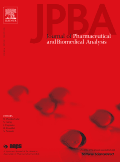
Proteomics Clinical Applications
Scope & Guideline
Unlocking the Potential of Proteomics in Clinical Settings
Introduction
Aims and Scopes
- Clinical Biomarker Discovery:
The journal prioritizes research that identifies and validates novel biomarkers for various diseases using proteomic techniques, facilitating early detection and personalized treatment. - Disease Mechanisms and Pathophysiology:
A core focus is on elucidating the molecular mechanisms underlying diseases through proteomic analysis, contributing to a better understanding of disease pathology. - Technological Advancements in Proteomics:
The journal highlights innovative methodologies and technologies in proteomics, such as mass spectrometry, which enhance the analysis and interpretation of complex biological samples. - Integration of Multi-Omics Approaches:
Research that integrates proteomics with other omics data (genomics, metabolomics) is encouraged, providing a comprehensive view of biological systems and disease states. - Clinical Applications and Therapeutic Insights:
Studies that translate proteomic findings into clinical applications, including drug development and therapeutic strategies, are significant for the journal's scope.
Trending and Emerging
- Metabolomic Integration with Proteomics:
Recent publications have increasingly focused on the integration of metabolomics with proteomics to provide a more comprehensive understanding of disease states, particularly in metabolic and degenerative diseases. - Artificial Intelligence and Machine Learning Applications:
There is a growing trend towards utilizing AI and machine learning techniques to analyze proteomic data, enhancing biomarker discovery and improving diagnostic accuracy. - Personalized Medicine and Targeted Therapies:
Research emphasizing the role of proteomics in personalized medicine is on the rise, highlighting the importance of tailored therapeutic approaches based on individual proteomic profiles. - Extracellular Vesicles and Secretomes:
Studies investigating the role of extracellular vesicles and secretomes in disease mechanisms and biomarker discovery are emerging as a prominent theme, reflecting their significance in cell communication and pathology. - Focus on Chronic Diseases and Comorbidities:
There is an increasing emphasis on understanding the proteomic landscape associated with chronic diseases and their comorbidities, such as diabetes, cardiovascular diseases, and cancer, which is essential for developing effective management strategies.
Declining or Waning
- Basic Research in Non-Clinical Settings:
There has been a noticeable decline in papers focusing solely on basic proteomic research not directly linked to clinical applications, as the journal emphasizes translational and applied research. - Single Omics Studies:
Research centered exclusively on proteomics without integrating other omic data has become less common, suggesting a trend towards more holistic approaches in studying diseases. - Proteomics in Non-Human Models:
The focus on animal models and non-human systems is waning, with more studies concentrating on human samples and clinical relevance, reflecting a shift towards human-centric research. - Historical Proteomic Techniques:
Older methodologies that have been replaced by more advanced techniques, such as traditional 2D gel electrophoresis, are seeing reduced representation in the journal, as the field moves towards more sophisticated mass spectrometry-based approaches. - General Proteomic Reviews:
Papers that provide broad overviews of proteomics without specific clinical applications or novel insights have decreased, indicating a preference for original research and detailed case studies.
Similar Journals

BIOLOGICAL PROCEDURES ONLINE
Empowering Researchers with Accessible Scientific Knowledge.BIOLOGICAL PROCEDURES ONLINE is a premier open-access journal published by BMC, dedicated to advancing the fields of biochemistry, genetics, and molecular biology. With its electronic ISSN 1480-9222 and a strong commitment to accessibility since 2009, this journal provides a vital platform for researchers and scholars to disseminate their findings and foster collaboration within the scientific community. Based in the United Kingdom, this journal has garnered an impressive reputation, achieving Q1 status in the 2023 category rankings, with notable inclusion in the Scopus rankings, placing it in the 86th percentile among 221 peer journals in the general biochemistry, genetics, and molecular biology domain. It covers a broad range of topics, ensuring coverage of the latest advancements and methodologies in biological procedures, making it an essential resource for academics, practitioners, and students alike. Researchers are encouraged to submit their innovative work and contribute to the ongoing dialogue in this dynamic and ever-evolving field.

Cell Reports Medicine
Transforming discoveries into medical advancements for all.Cell Reports Medicine, published by Cell Press, represents a pivotal advancement in the open access landscape of biomedical research since its inception in 2020. With a dedicated focus on the intersection of medicine, biochemistry, genetics, and molecular biology, this journal has quickly established itself as a key resource, earning a remarkable Q1 ranking in these fields. Based in the United States, Cell Reports Medicine boasts impressive metrics, ranking #25 out of 636 in General Medicine and #18 out of 221 in Biochemistry, underscoring its influence and reach within the scientific community, with a notable 96th and 92nd percentile respectively. As a fully open access journal, it fosters global dissemination of knowledge, ensuring that groundbreaking research is readily available to researchers, professionals, and students alike. The journal not only promotes high-quality research but also aims to bridge the gap between molecular discoveries and clinical applications, making it an essential addition to any academic library or researcher's toolkit.

Cancer Genomics & Proteomics
Exploring the genetic and protein landscapes of cancer.Cancer Genomics & Proteomics is a pivotal journal published by the International Institute of Anticancer Research, dedicated to advancing the fields of cancer genomics and proteomics. Established in 2004 and running until 2024, this journal provides a vital platform for the dissemination of high-quality research that explores genetic and protein interactions in cancer, thereby fostering innovations in diagnostics and therapeutics. The journal boasts a commendable Q2 ranking in Biochemistry and Genetics and is recognized in the Q3 tier for its contributions to Cancer Research and Molecular Biology, reflecting its growing impact in these dynamic fields. Operating out of Greece, it engages a diverse audience, including researchers, clinicians, and students, by sharing significant findings and methodological advancements in the realm of cancer studies. While currently not an open-access publication, Cancer Genomics & Proteomics remains committed to enriching scientific dialogue and collaboration with its insightful articles and reviews.

PROTEOMICS
Advancing the frontiers of protein research.PROTEOMICS is a leading journal focused on the rapidly evolving field of proteomics, published by WILEY in Germany. With a solid reputation established since its inception in 2001, it has continually contributed to the understanding of protein functions and interactions within biological systems. As part of its commitment to academic excellence, PROTEOMICS is ranked in the second quartile for both Biochemistry and Molecular Biology categories (2023), reflecting its significant influence in advancing research in these areas. Although it does not currently provide open access options, it remains a vital resource for researchers, professionals, and students keen to explore innovative methodologies and findings in proteomic research. By publishing groundbreaking studies that bridge theoretical knowledge with practical applications, PROTEOMICS plays a crucial role in enhancing our understanding of molecular processes and driving forward advancements in the life sciences.

Genome Medicine
Advancing the Frontier of Genetic UnderstandingGenome Medicine is a prestigious, peer-reviewed journal published by BMC, focusing on the rapidly evolving fields of genetics, molecular biology, and molecular medicine. Established in 2009 and boasting an open-access format, it has become a leading platform for disseminating high-quality research findings that advance our understanding of genetic diseases and therapeutic innovations. With an impressive Q1 ranking across multiple relevant categories—in particular, genetics (clinical), molecular biology, and molecular medicine—this journal is recognized for its substantial impact in the academic community, as evidenced by its exceptional placement in Scopus rankings. By providing unrestricted access to groundbreaking studies, Genome Medicine fosters collaboration and knowledge sharing among researchers, clinicians, and educators, thus playing a vital role in the transition from fundamental genetic research to clinical applications. Researchers are encouraged to contribute their findings and insights, further solidifying the journal’s position as a pivotal resource for those dedicated to advancing genomic medicine.

Biochemistry Research International
Pioneering discoveries in biochemistry for a brighter tomorrow.Biochemistry Research International is a prominent and dynamic journal published by Hindawi Ltd, dedicated to advancing knowledge in the field of biochemistry. With its Open Access model established since 2010, the journal provides unrestricted access to high-quality research, thereby fostering global communication among researchers and professionals. Operating out of the United States, Biochemistry Research International serves as a vital platform for disseminating cutting-edge findings in biochemistry and molecular biology, holding a respectable Q2 ranking in its category as of 2023. The journal's scope encompasses a wide array of topics including but not limited to biochemical processes, genetic engineering, and molecular interactions, making it an essential resource for students and seasoned researchers alike. With an impact factor reflective of its significance in the academic community, Biochemistry Research International continues to play an integral role in shaping the future of biochemistry research.

Current Proteomics
Empowering the Future of Proteomics ScienceCurrent Proteomics is a distinguished journal dedicated to the dynamic field of proteomics, offering researchers and professionals a platform to disseminate innovative findings and comprehensive reviews. Published by Bentham Science Publishers Ltd, this journal caters to a global audience and serves as an essential resource for students, academics, and industry experts interested in advances in biochemistry and molecular biology. With an ISSN of 1570-1646 and an E-ISSN of 1875-6247, the journal has established itself in various research categories, achieving a Q4 ranking in both Biochemistry and Molecular Biology as of 2023. While the impact factor and H-index data are not specified, its Scopus ranking reflects a competitive position in its fields, with percentiles in the 12th to 16th range. Although not an open-access journal, Current Proteomics is vital for fostering ongoing dialogue and collaboration in proteomic research, encouraging contributions that explore cutting-edge methodologies and applications. Researchers are invited to share their insights and contribute to this evolving discipline, thus enhancing the collective understanding of proteomics within the scientific community.

Proteomes
Bridging Disciplines Through Protein Research.Proteomes, published by MDPI since 2013, is a notable open access journal that occupies a critical place in the realms of Biochemistry, Clinical Biochemistry, Molecular Biology, and Structural Biology. Based in Switzerland, this journal not only promotes the dissemination of high-quality research pertaining to protein structures and functions but also emphasizes interdisciplinary approaches that bridge various fields of biomedical science. With a Category Quartile ranking of Q2 across multiple pertinent categories in 2023, Proteomes boasts a competitive impact within the scientific community, evidenced by its robust Scopus rankings. Researchers, professionals, and students are invited to explore a wealth of pioneering studies and reviews that are made freely accessible, aligning with global trends in open scientific communication. Whether contributing original research or seeking to expand their knowledge, the journal serves as an invaluable resource for anyone engaged in the evolving landscape of proteomics.

Journal of Pharmaceutical and Biomedical Analysis
Exploring the intersection of analytical chemistry and biomedicine.The Journal of Pharmaceutical and Biomedical Analysis, published by ELSEVIER and available in print and online formats, stands as a pivotal source of knowledge in the realms of Analytical Chemistry, Clinical Biochemistry, Drug Discovery, and Pharmaceutical Science. With an ISSN of 0731-7085 and an e-ISSN of 1873-264X, this journal is dedicated to publishing high-quality research that advances the understanding and development of analytical techniques in pharmaceuticals and biomedicine. The journal has earned a solid reputation, reflected in its Q2 category rankings across five distinct fields for 2023, and boasts impressive Scopus rankings, signaling its robust impact within the academic community. The Journal of Pharmaceutical and Biomedical Analysis serves as an essential resource for researchers, professionals, and students alike, providing actionable insights and fostering innovation that can directly influence future advancements in drug development and biomedical applications.

MedComm is a distinguished Open Access journal published by Wiley, located in the United States. Since its inception in 2020, it has rapidly established itself as a leading platform for cutting-edge research in the fields of Biochemistry, Cell Biology, Drug Discovery, Genetics, Immunology and Allergy, and Oncology, achieving a prestigious Q1 category ranking across multiple disciplines in 2023. MedComm is committed to providing a rigorous and transparent peer-review process, ensuring the publication of high-quality articles that advance the frontiers of medical science. With its remarkable Scopus ranking, the journal serves as an invaluable resource for researchers, professionals, and students looking to stay abreast of important developments in the life sciences. The open access model facilitates widespread dissemination of scholarly work, fostering collaboration and innovation within the global scientific community. Researchers interested in submitting their work or exploring the latest findings are encouraged to engage with this pivotal journal during the converged years from 2020 to 2024.